-
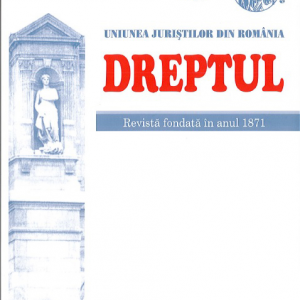 Within this study the author makes a brief examination of the main amendments and supplements of the new Civil Procedure Code, operated during the period passed from its adoption up to the present. Some of the most significant normative amendments and supplements have been operated by the Law No 310/2018 and concern the matter of material competence of judges. The author considers that by these legislative interventions the legislator’s vision about the competence of the courts of first instance has been significantly amended, this being enlarged with cases of special importance, such as those in matters of inheritance and usucapion. In this way, the courts of first instance tend to become, to a certain extent, common law courts, and not courts for the small claims. A change of substance which has been emphasized in a special way is also the one that offers another perspective on the competence of the supreme court in the matter of review. Important evolutions have also been brought in the matter of incompatibility, of the regularisation procedure and in the field of enforcement. With regard to these institutions the author has formulated also some criticism about their content, but also in relation to some unconstitutionality decisions, among which some are considered questionable.
Within this study the author makes a brief examination of the main amendments and supplements of the new Civil Procedure Code, operated during the period passed from its adoption up to the present. Some of the most significant normative amendments and supplements have been operated by the Law No 310/2018 and concern the matter of material competence of judges. The author considers that by these legislative interventions the legislator’s vision about the competence of the courts of first instance has been significantly amended, this being enlarged with cases of special importance, such as those in matters of inheritance and usucapion. In this way, the courts of first instance tend to become, to a certain extent, common law courts, and not courts for the small claims. A change of substance which has been emphasized in a special way is also the one that offers another perspective on the competence of the supreme court in the matter of review. Important evolutions have also been brought in the matter of incompatibility, of the regularisation procedure and in the field of enforcement. With regard to these institutions the author has formulated also some criticism about their content, but also in relation to some unconstitutionality decisions, among which some are considered questionable. -
 The article proposes a sensitive topic in the Romanian criminal procedure, namely to determine the extent to which the cases of absolute nullity are limitatively provided by the Criminal Procedure Code (Article 281 of the Criminal Procedure Code) or whether there are cases of nullity of the processual or procedural documents which, although not included in the enumeration of Article 281 of the Criminal Procedure Code, are, however, veritable cases of absolute nullity. The problem is all the more delicate since the national doctrine is situated, up to this moment, in the comfort zone in which the cases of absolute nullity are equated to those of express nullity and those of relative nullity to those of virtual nullity. I have shown, with examples from the practice, but also from the doctrine (too timid so far), that there are situations of virtual absolute nullity of the criminal processual acts not even listed in the content of Article 281 of the Criminal Procedure Code, as well as the situations in which they may become incidental.
The article proposes a sensitive topic in the Romanian criminal procedure, namely to determine the extent to which the cases of absolute nullity are limitatively provided by the Criminal Procedure Code (Article 281 of the Criminal Procedure Code) or whether there are cases of nullity of the processual or procedural documents which, although not included in the enumeration of Article 281 of the Criminal Procedure Code, are, however, veritable cases of absolute nullity. The problem is all the more delicate since the national doctrine is situated, up to this moment, in the comfort zone in which the cases of absolute nullity are equated to those of express nullity and those of relative nullity to those of virtual nullity. I have shown, with examples from the practice, but also from the doctrine (too timid so far), that there are situations of virtual absolute nullity of the criminal processual acts not even listed in the content of Article 281 of the Criminal Procedure Code, as well as the situations in which they may become incidental. -
 The direct action in the guarantee for hidden vices is still a new subject in the legal doctrine and especially in the Romanian judicial practice. At present, judicial practice has not committed such an action, although the issue has been debated, both in the doctrine of the old Civil Code, and especially in the doctrine of the new Civil Code. What is even more surprising is that the legislator understood to directly regulate such direct action in the case of the guarantee for eviction, without regulating it in the case of the cover for hidden vices. If technical and legal issues seem relatively simple in the case of direct action for hidden vices against a previous vendor or first seller, things get complicated when it comes to direct action in hidden vices against the contractor. The present study aims to identify the legal nature and the basis of the direct action in the guarantee for hidden vices against the contractor, thus establishing its admissibility criteria. By the arguments that we will render, we hope to contribute to the shaping of some defining elements of direct action that will facilitate its practical application.
The direct action in the guarantee for hidden vices is still a new subject in the legal doctrine and especially in the Romanian judicial practice. At present, judicial practice has not committed such an action, although the issue has been debated, both in the doctrine of the old Civil Code, and especially in the doctrine of the new Civil Code. What is even more surprising is that the legislator understood to directly regulate such direct action in the case of the guarantee for eviction, without regulating it in the case of the cover for hidden vices. If technical and legal issues seem relatively simple in the case of direct action for hidden vices against a previous vendor or first seller, things get complicated when it comes to direct action in hidden vices against the contractor. The present study aims to identify the legal nature and the basis of the direct action in the guarantee for hidden vices against the contractor, thus establishing its admissibility criteria. By the arguments that we will render, we hope to contribute to the shaping of some defining elements of direct action that will facilitate its practical application. -
 The recent Administrative Code (approved by the Government Emergency Ordinance No 57/2019) has taken over from the old regulation (the Law on local public administration No 215/2001), with some amendments, the rules regarding the function of public administrator at the level of communes, cities, municipalities, counties and associations of inter-community development. In this article, the author mainly considers the appointment of the public administrator by the mayor, the delegation of his attributions, including that of the main loan officer. Special attention is paid to the management contract (its object, the rights and obligations of the contracting parties, its duration and its cessation). Regarding the legal nature of the respective contract, the author’s opinion is that this is an administrative contract, of public law. Among the arguments considered the following are included: it is regulated by the Administrative Code; one of the parties is a public authority; its object consists in „coordinating some compartments of the specialized apparatus or of the public services”; it can be terminated (unilaterally) by the public authority. The end of the article is devoted to the triptych at the level of communes, cities and municipality, triptych consisting of the mayor, the deputy mayor and the public administrator. The idea is that the delegation of some of the attributions to the public administrator does not remove the competence of the mayor to exercise any attributions given by law in his competence.
The recent Administrative Code (approved by the Government Emergency Ordinance No 57/2019) has taken over from the old regulation (the Law on local public administration No 215/2001), with some amendments, the rules regarding the function of public administrator at the level of communes, cities, municipalities, counties and associations of inter-community development. In this article, the author mainly considers the appointment of the public administrator by the mayor, the delegation of his attributions, including that of the main loan officer. Special attention is paid to the management contract (its object, the rights and obligations of the contracting parties, its duration and its cessation). Regarding the legal nature of the respective contract, the author’s opinion is that this is an administrative contract, of public law. Among the arguments considered the following are included: it is regulated by the Administrative Code; one of the parties is a public authority; its object consists in „coordinating some compartments of the specialized apparatus or of the public services”; it can be terminated (unilaterally) by the public authority. The end of the article is devoted to the triptych at the level of communes, cities and municipality, triptych consisting of the mayor, the deputy mayor and the public administrator. The idea is that the delegation of some of the attributions to the public administrator does not remove the competence of the mayor to exercise any attributions given by law in his competence. -
 New technologies, such as wireless communications, generate unique threats to human health and to the quality of the environment. Among them, electromagnetic fields (EMF) – of the relay antennas or power lines – represent a colourless, odourless and invisible pollution with adverse sanitary effects. As the technologies of the field are rapidly evolving, even before their negative consequences can be sufficiently researched and proven by science, they create difficulties for the ability of the right to adapt and respond appropriately to the new problems thus raised. Among the first legal reactions in the matter are those registered as regards the human rights, especially ECHR case law, which assimilates the EMF threats in the context of Article 8 of the Convention, involves the precautionary principle and imposes the notion of gravity threshold. The Case Calancea and others v. The Republic of Moldova (2018) represents an important moment in the opening of the Strasbourg court to the new problems of EMF and, despite the reluctance manifested by means of the judgment delivered, this implies a recognition of the existence and of the need for legal assimilation of new threats to human rights and the jurisprudential consolidation, in this context, of the right to a healthy environment.
New technologies, such as wireless communications, generate unique threats to human health and to the quality of the environment. Among them, electromagnetic fields (EMF) – of the relay antennas or power lines – represent a colourless, odourless and invisible pollution with adverse sanitary effects. As the technologies of the field are rapidly evolving, even before their negative consequences can be sufficiently researched and proven by science, they create difficulties for the ability of the right to adapt and respond appropriately to the new problems thus raised. Among the first legal reactions in the matter are those registered as regards the human rights, especially ECHR case law, which assimilates the EMF threats in the context of Article 8 of the Convention, involves the precautionary principle and imposes the notion of gravity threshold. The Case Calancea and others v. The Republic of Moldova (2018) represents an important moment in the opening of the Strasbourg court to the new problems of EMF and, despite the reluctance manifested by means of the judgment delivered, this implies a recognition of the existence and of the need for legal assimilation of new threats to human rights and the jurisprudential consolidation, in this context, of the right to a healthy environment. -
 The administration of evidence necessarily implies that the evidence is first proposed and produced (submitted) by the parties and then approved by the court. The legislator of the Civil Procedure Code instituted a regime of evidence renewed in its spirit and in its formal expression, devoting, in addition to the general provisions on the administration of evidence (Articles 260–263 of the Civil Procedure Code), also some provisions specific to the administration of evidence by written documents (Articles 292–300 of the Civil Procedure Code), as well as to the conduct of the procedures for verification of documents (Articles 301–308 of the Civil Procedure Code). As a rule, the production (submission) of the documents takes place voluntarily, under the terms and conditions set by law. However, in some cases, the documents relating to the pending trial are not produced voluntarily, whereas their presentation in court could have consequences for those who hold them or for their spouse, kin or relatives. The attitude of the person who holds the document not to produce it voluntarily may have different motives: family secret, business secret, confidentiality, strictly personal matters about the dignity or private life of a person, etc. In other cases, bringing written documents to court would be too expensive or the documents would be too voluminous or numerous. In such cases, the justice of the dialogue will prevail. From the correlation of the provisions of the final sentence of Article 22 (2) with those of Article 254 (2), Article 254 (5) of the Civil Procedure Code, it appears that the legislator draws attention to the cooperation which must exist between the judge and the parties, as regards the evidence of facts, without thereby understanding that the judge substitutes the parties, automatically filling the passivity of the party either a claimant, or a defendant
The administration of evidence necessarily implies that the evidence is first proposed and produced (submitted) by the parties and then approved by the court. The legislator of the Civil Procedure Code instituted a regime of evidence renewed in its spirit and in its formal expression, devoting, in addition to the general provisions on the administration of evidence (Articles 260–263 of the Civil Procedure Code), also some provisions specific to the administration of evidence by written documents (Articles 292–300 of the Civil Procedure Code), as well as to the conduct of the procedures for verification of documents (Articles 301–308 of the Civil Procedure Code). As a rule, the production (submission) of the documents takes place voluntarily, under the terms and conditions set by law. However, in some cases, the documents relating to the pending trial are not produced voluntarily, whereas their presentation in court could have consequences for those who hold them or for their spouse, kin or relatives. The attitude of the person who holds the document not to produce it voluntarily may have different motives: family secret, business secret, confidentiality, strictly personal matters about the dignity or private life of a person, etc. In other cases, bringing written documents to court would be too expensive or the documents would be too voluminous or numerous. In such cases, the justice of the dialogue will prevail. From the correlation of the provisions of the final sentence of Article 22 (2) with those of Article 254 (2), Article 254 (5) of the Civil Procedure Code, it appears that the legislator draws attention to the cooperation which must exist between the judge and the parties, as regards the evidence of facts, without thereby understanding that the judge substitutes the parties, automatically filling the passivity of the party either a claimant, or a defendant -
 In this article, the author analyzes the legal nature of the parliamentary committees and concludes, together with other authors, that they should be considered as internal working bodies of each Legislative Chamber. The role of parliamentary committees, whether standing committees or committees of inquiry, or other special committees, is to prepare the works which are going to be debated in the plenum of the Legislative Assemblies. As working bodies, the parliamentary committees do not have their own decision-making power over the matter referred to them. In other words, the parliamentary committees do not express a political will, in a deliberative sense, because their role is to examine the matters referred to them by the standing bureaux of the Legislative Chambers and to make proposals thereto. The reports and opinions they make on the matters under examination have the value of recommendation made to the plenum of each Legislative Chamber, these being free – as deliberative bodies – to accept or reject the solutions proposed by the committees. Each Chamber of Parliament has the full freedom to set up specialized committees in certain areas of activity. The Constitution obliges the Legislative Chambers to set up permanent committees and to set up – when it deems necessary – committees of inquiry or other special committees. The composition of the parliamentary committees reflects, as far as possible, the political configuration of the Chamber that has decided to set them up.
In this article, the author analyzes the legal nature of the parliamentary committees and concludes, together with other authors, that they should be considered as internal working bodies of each Legislative Chamber. The role of parliamentary committees, whether standing committees or committees of inquiry, or other special committees, is to prepare the works which are going to be debated in the plenum of the Legislative Assemblies. As working bodies, the parliamentary committees do not have their own decision-making power over the matter referred to them. In other words, the parliamentary committees do not express a political will, in a deliberative sense, because their role is to examine the matters referred to them by the standing bureaux of the Legislative Chambers and to make proposals thereto. The reports and opinions they make on the matters under examination have the value of recommendation made to the plenum of each Legislative Chamber, these being free – as deliberative bodies – to accept or reject the solutions proposed by the committees. Each Chamber of Parliament has the full freedom to set up specialized committees in certain areas of activity. The Constitution obliges the Legislative Chambers to set up permanent committees and to set up – when it deems necessary – committees of inquiry or other special committees. The composition of the parliamentary committees reflects, as far as possible, the political configuration of the Chamber that has decided to set them up. -
 In this article the author analyses who can have active and passive quality in administrative contentious disputes according to the provisions of Law No 554/2004 of administrative contentious, as amended by Law No 212/2018 for amending and completing the Law on administrative contentious No 554/2004 and other normative acts. The article highlights the correlations existing between the Law of administrative contentious, the Civil Code and the Civil Procedure Code in the subject matter. The article provides solutions to many practical problems.
In this article the author analyses who can have active and passive quality in administrative contentious disputes according to the provisions of Law No 554/2004 of administrative contentious, as amended by Law No 212/2018 for amending and completing the Law on administrative contentious No 554/2004 and other normative acts. The article highlights the correlations existing between the Law of administrative contentious, the Civil Code and the Civil Procedure Code in the subject matter. The article provides solutions to many practical problems. -
 The authentic document is the document drawn up or, as the case may be, received and authenticated by a public authority, by the notary public or by another person invested by the state with public authority. Likewise, any other document issued by a public authority and to which the law confers this character is authentic. In other words, in order to be qualified as „authenticated document”, a document must meet the following requirements: a) be drawn up or, where appropriate, received and authenticated by a public authority, a notary public or by another person invested by the state with public authority; b) the instrumenting agent must be competent from material and territorial point of view to instrument the document; c) to be drawn up in compliance with the formalities required by law or, as the legislator specifies, „in the form and under the conditions established by law”. The legislator devotes the field of authenticity to the document, specifying the elements which relate to authenticity, namely: establishing the identity of the parties; expressing their consent about their content; the signature of the parties and the date of the document [Article 269 (1) second sentence of the Civil Procedure Code, Article 90 (2) of the Law No 36/1995]. The signature of the public servant confers authenticity to the document on which it is given. It follows that it falls into the field of authenticity what the instrumenting agent finds ex propriis sensibus. The document which by its form and appearance (the signature of the public notary or the public servant, the seal of the authority, the registration number, etc.) has the aspect of an authentic document drawn up regularly enjoys the presumption of authenticity and validity, and the contesting party can only fight against it by means of the procedure of registration of forgery.
The authentic document is the document drawn up or, as the case may be, received and authenticated by a public authority, by the notary public or by another person invested by the state with public authority. Likewise, any other document issued by a public authority and to which the law confers this character is authentic. In other words, in order to be qualified as „authenticated document”, a document must meet the following requirements: a) be drawn up or, where appropriate, received and authenticated by a public authority, a notary public or by another person invested by the state with public authority; b) the instrumenting agent must be competent from material and territorial point of view to instrument the document; c) to be drawn up in compliance with the formalities required by law or, as the legislator specifies, „in the form and under the conditions established by law”. The legislator devotes the field of authenticity to the document, specifying the elements which relate to authenticity, namely: establishing the identity of the parties; expressing their consent about their content; the signature of the parties and the date of the document [Article 269 (1) second sentence of the Civil Procedure Code, Article 90 (2) of the Law No 36/1995]. The signature of the public servant confers authenticity to the document on which it is given. It follows that it falls into the field of authenticity what the instrumenting agent finds ex propriis sensibus. The document which by its form and appearance (the signature of the public notary or the public servant, the seal of the authority, the registration number, etc.) has the aspect of an authentic document drawn up regularly enjoys the presumption of authenticity and validity, and the contesting party can only fight against it by means of the procedure of registration of forgery. -
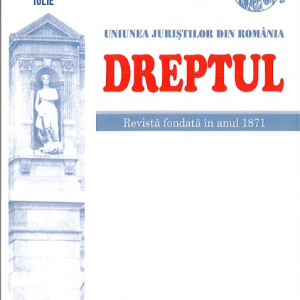 The consent of the patient is a legal consent and therefore it has to comply with all the validity conditions thereof. Among these, the condition of the capacity of exercise of the minor patient benefits from a special regulation by Article 661, the 2nd sentence of the Law No 95/2006. The present study intends to analyze these special provisions, by corroborating them with the regulations applicable to the legal representatives of the minor and by reference to the common law in the matter of capacity of exercise, for the purpose of accomplishing the finality of the legal provisions (protected access to the medical service) and of avoiding some blockage situations, generated by a bureaucratic interpretation.
The consent of the patient is a legal consent and therefore it has to comply with all the validity conditions thereof. Among these, the condition of the capacity of exercise of the minor patient benefits from a special regulation by Article 661, the 2nd sentence of the Law No 95/2006. The present study intends to analyze these special provisions, by corroborating them with the regulations applicable to the legal representatives of the minor and by reference to the common law in the matter of capacity of exercise, for the purpose of accomplishing the finality of the legal provisions (protected access to the medical service) and of avoiding some blockage situations, generated by a bureaucratic interpretation. -
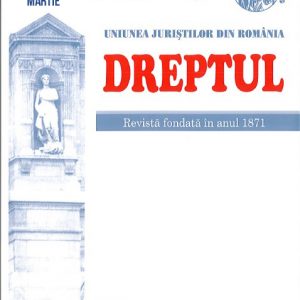 The features that give a distinct note to European Union law, and even its specificity, in relation to national or international legal orders, whether universal or regional, par excellence lie in the immediate, direct and priority applicability of the rules that make it up. The concept of „priority” EU law in relation to the national law of the Member States is likely to complete the understanding of its specificity in relation to the situation which we encounter with reference to international law. The development and adoption of primary or secondary norms of European Union law represent true, intrinsic consequences of developments or, respectively, expectations recorded at EU level, either qualitatively or quantitatively. From such a perspective the steps we are witnessing, including those of legislative nature, must be known, understood, and accepted. Our approach considers the fundamental legal basis offered by the Romanian Constitution, republished version, but also relevant aspects found in the Civil Code, the Civil Procedure Code, Penal Code, and Criminal Procedure Code, to which we add the Insolvency Law.
The features that give a distinct note to European Union law, and even its specificity, in relation to national or international legal orders, whether universal or regional, par excellence lie in the immediate, direct and priority applicability of the rules that make it up. The concept of „priority” EU law in relation to the national law of the Member States is likely to complete the understanding of its specificity in relation to the situation which we encounter with reference to international law. The development and adoption of primary or secondary norms of European Union law represent true, intrinsic consequences of developments or, respectively, expectations recorded at EU level, either qualitatively or quantitatively. From such a perspective the steps we are witnessing, including those of legislative nature, must be known, understood, and accepted. Our approach considers the fundamental legal basis offered by the Romanian Constitution, republished version, but also relevant aspects found in the Civil Code, the Civil Procedure Code, Penal Code, and Criminal Procedure Code, to which we add the Insolvency Law. -
 The purpose of the present analysis is to determine the applicable legal regime to certain procedural acts made in bad faith in relation to the abuse of rights theory, and the lis pendens (same trial pending in the same time before two or more panel of judges) and joined cases institutions. The analysis started from a particular case in which a claimant filed two statements of claim having the same object in two considerably distant moments (7 years between them) against the same defendant. The only aspects which the claimant drafted differently in the second case file, in order to eliminate risk of identity, were the claims’ phrasing and some additional arguments in his favour which were not inserted in a proper form in the first case file. Nevertheless, through the second statement of claim, the claimant himself raised the lis pendens exception, in order to send the second case file in front of the initial judge and thus to overcome his incapacity to invoke additional arguments in the first case file. The court vested with the judgment of the lis pendens exception stated that the exception is applicable and in the case at hand. Thus, it has sent the second file to be analyzed together with the initial statement of claim. In addition to this, the court fined the claimant for misconduct represented by filing intentionally the two statement of claims having the same object. In consequence, in the present article we have analyzed the conditions to be met in order to state the presence of an abuse of rights in the light of the lis pendens and joined cases institutions. We have identified the purpose for the regulation of these legal institutions and the similarities and differences between them. In addition to this, we addressed the conduct which the court should have in order to correctly analyze the two statements of claim which are object of the lis pendens exception. Finally, our theoretical conclusions related to the three institutions were applied to our particular case, in order to prove the presence of an abuse of right.
The purpose of the present analysis is to determine the applicable legal regime to certain procedural acts made in bad faith in relation to the abuse of rights theory, and the lis pendens (same trial pending in the same time before two or more panel of judges) and joined cases institutions. The analysis started from a particular case in which a claimant filed two statements of claim having the same object in two considerably distant moments (7 years between them) against the same defendant. The only aspects which the claimant drafted differently in the second case file, in order to eliminate risk of identity, were the claims’ phrasing and some additional arguments in his favour which were not inserted in a proper form in the first case file. Nevertheless, through the second statement of claim, the claimant himself raised the lis pendens exception, in order to send the second case file in front of the initial judge and thus to overcome his incapacity to invoke additional arguments in the first case file. The court vested with the judgment of the lis pendens exception stated that the exception is applicable and in the case at hand. Thus, it has sent the second file to be analyzed together with the initial statement of claim. In addition to this, the court fined the claimant for misconduct represented by filing intentionally the two statement of claims having the same object. In consequence, in the present article we have analyzed the conditions to be met in order to state the presence of an abuse of rights in the light of the lis pendens and joined cases institutions. We have identified the purpose for the regulation of these legal institutions and the similarities and differences between them. In addition to this, we addressed the conduct which the court should have in order to correctly analyze the two statements of claim which are object of the lis pendens exception. Finally, our theoretical conclusions related to the three institutions were applied to our particular case, in order to prove the presence of an abuse of right. -
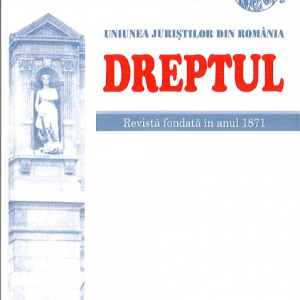 The present study is an analysis of the theoretical and recent judicial practice occasioned by the offences of trafficking in human beings and by proxenetism. His author has quoted relevant opinions from the specialized doctrine, succeeding in creating a complete picture of the two types of offences, and these elements were doubled by invoking some aspects of the judicial practice in the field. Some of the statements invoked in this study are criticized in an argumentative manner. The manner of conceiving the theme reveals its author’s intention to emphasize also those aspects that confer a comparison content of the offences trafficking in persons and trafficking in minors, on the one hand, and proxenetism respectively, on the other hand. In the course of the analysis, aspects related to other forms of exploitation of the person, as defined in the Criminal Code, were tangentially pointed out as well. At the same time, the article also contains some very pertinent de lege ferenda proposals, based on the good knowledge of the analyzed field.
The present study is an analysis of the theoretical and recent judicial practice occasioned by the offences of trafficking in human beings and by proxenetism. His author has quoted relevant opinions from the specialized doctrine, succeeding in creating a complete picture of the two types of offences, and these elements were doubled by invoking some aspects of the judicial practice in the field. Some of the statements invoked in this study are criticized in an argumentative manner. The manner of conceiving the theme reveals its author’s intention to emphasize also those aspects that confer a comparison content of the offences trafficking in persons and trafficking in minors, on the one hand, and proxenetism respectively, on the other hand. In the course of the analysis, aspects related to other forms of exploitation of the person, as defined in the Criminal Code, were tangentially pointed out as well. At the same time, the article also contains some very pertinent de lege ferenda proposals, based on the good knowledge of the analyzed field. -
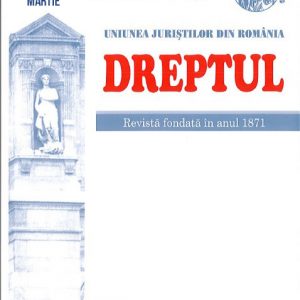 Ideea de reparație este, cum scria un autor, „una din cele mai vechi idei morale ale omenirei” (G. Ripert, La règle morale dans les oblig. civiles nr. 121, p. 223). În decursul timpurilor ea a suferit o serie de transformări, a parcurs mai multe etape, rezumate în cele 4 subtitluri ale studiului de față, care urmărește numai să schițeze în linii mari sensul acestei atât de interesante evoluții, care are semnificația drumului penibil al însăși ideei de Dreptate. Noțiunea de răspundere, în adevăr, se situiază în centrul tuturor instituțiunilor juridice care au de obiect reglementarea raporturilor între indivizi în societate, având un rol regulator și sancționator, întru cât tinde la păstrarea echilibrului rupt prin actele ilicite, fie că sunt violări de obligațiuni contractuale, fie că au caracterul și mai grav al călcării unor norme de conduită, pe pare societatea însăși le impune și îndeosebi acea normă negativă universală de neminem laedere, care constitue în esență principiul din care decurge însăși ideea de răspundere.
Ideea de reparație este, cum scria un autor, „una din cele mai vechi idei morale ale omenirei” (G. Ripert, La règle morale dans les oblig. civiles nr. 121, p. 223). În decursul timpurilor ea a suferit o serie de transformări, a parcurs mai multe etape, rezumate în cele 4 subtitluri ale studiului de față, care urmărește numai să schițeze în linii mari sensul acestei atât de interesante evoluții, care are semnificația drumului penibil al însăși ideei de Dreptate. Noțiunea de răspundere, în adevăr, se situiază în centrul tuturor instituțiunilor juridice care au de obiect reglementarea raporturilor între indivizi în societate, având un rol regulator și sancționator, întru cât tinde la păstrarea echilibrului rupt prin actele ilicite, fie că sunt violări de obligațiuni contractuale, fie că au caracterul și mai grav al călcării unor norme de conduită, pe pare societatea însăși le impune și îndeosebi acea normă negativă universală de neminem laedere, care constitue în esență principiul din care decurge însăși ideea de răspundere. -
 As a novelty, the legislator provides, in the current Civil Procedure Code, that the evidence of an act or of a legal fact can be made, among others, by using the material means of evidence (Article 250), to which it dedicates the provisions of Articles 341–344, provisions which constitute the common law in the matter. Things which, by their attributes, by their appearance or by the signs or traces they preserve, serve to establish a fact that can lead to the settlement of the trial are material means of evidence. Likewise, in the legislator’s conception, the registrations of the state or location of objects or certain factual situations, regardless of the way of registration, are also material means of evidence. In this hypothesis, the material evidence (the content of the registration) is submitted to the court through the technical support used for registration. The solution of the legislator to acknowledge, in the Civil Procedure Code, provisions relative to the material means of evidence is natural, since, in accordance with the criteria used in the doctrine, material evidence is direct, primary, or immediate evidence, personally perceived by the judge of the case. Perhaps that one of the sources of inspiration for the Romanian legislator was the Civil Code of Québec. Although the French civil legislation does not contain express provisions on the material evidence, the French doctrine and the case law of the French Court of Cassation in the matter have also represented a reference for the Romanian legislator.
As a novelty, the legislator provides, in the current Civil Procedure Code, that the evidence of an act or of a legal fact can be made, among others, by using the material means of evidence (Article 250), to which it dedicates the provisions of Articles 341–344, provisions which constitute the common law in the matter. Things which, by their attributes, by their appearance or by the signs or traces they preserve, serve to establish a fact that can lead to the settlement of the trial are material means of evidence. Likewise, in the legislator’s conception, the registrations of the state or location of objects or certain factual situations, regardless of the way of registration, are also material means of evidence. In this hypothesis, the material evidence (the content of the registration) is submitted to the court through the technical support used for registration. The solution of the legislator to acknowledge, in the Civil Procedure Code, provisions relative to the material means of evidence is natural, since, in accordance with the criteria used in the doctrine, material evidence is direct, primary, or immediate evidence, personally perceived by the judge of the case. Perhaps that one of the sources of inspiration for the Romanian legislator was the Civil Code of Québec. Although the French civil legislation does not contain express provisions on the material evidence, the French doctrine and the case law of the French Court of Cassation in the matter have also represented a reference for the Romanian legislator. -
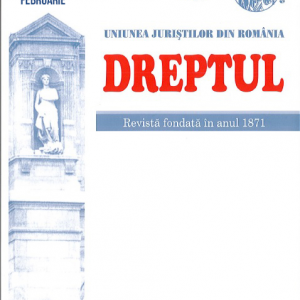 The company’s entry into insolvency proceedings may be the result of an unfavourable economic situation or the abusive or negligent attitude of the governing bodies may contribute to this outcome. Sometimes people outside the company may have exercised a direct or indirect control of the company’s activities and be liable for insolvency. In these last hypotheses, the legislator chose to sanction insolvency peers who are held patrimonial alongside the insolvent society in order to satisfy creditors’ claims. As a rule, the former statutory administrator is the one who is called upon to respond to the mismanagement of the company’s business. Taking responsibility for this person implies the making of a claim for property liability which is the subject of a separate litigation in the company’s insolvency proceedings. This distinct dispute is settled in a contradictory procedure, with the administration of evidence in order to establish the meeting of the conditions of civil liability under Article 169 of the Law No 85/2014. When, prior to the opening of insolvency proceedings or during the course of the proceedings, whether or not an application for the liability of the statutory administrator was initiated, the question arises as to what happens when the death of the statutory administrator occurs. Such a request to obtain a patrimonial response in conflict with the heirs of the predecessor administrator may be made or continued or the liability is limited to the person of the deceased and a decision cannot be made to order the successors to answer for de cujus clerical errors.
The company’s entry into insolvency proceedings may be the result of an unfavourable economic situation or the abusive or negligent attitude of the governing bodies may contribute to this outcome. Sometimes people outside the company may have exercised a direct or indirect control of the company’s activities and be liable for insolvency. In these last hypotheses, the legislator chose to sanction insolvency peers who are held patrimonial alongside the insolvent society in order to satisfy creditors’ claims. As a rule, the former statutory administrator is the one who is called upon to respond to the mismanagement of the company’s business. Taking responsibility for this person implies the making of a claim for property liability which is the subject of a separate litigation in the company’s insolvency proceedings. This distinct dispute is settled in a contradictory procedure, with the administration of evidence in order to establish the meeting of the conditions of civil liability under Article 169 of the Law No 85/2014. When, prior to the opening of insolvency proceedings or during the course of the proceedings, whether or not an application for the liability of the statutory administrator was initiated, the question arises as to what happens when the death of the statutory administrator occurs. Such a request to obtain a patrimonial response in conflict with the heirs of the predecessor administrator may be made or continued or the liability is limited to the person of the deceased and a decision cannot be made to order the successors to answer for de cujus clerical errors. -
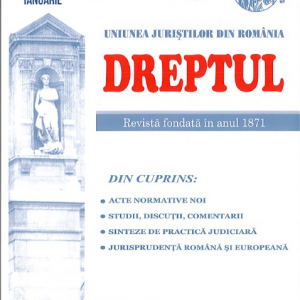 Arbitration is an alternative private jurisdiction to the State jurisdiction, in order to settle civil litigations. The private character of this jurisdiction is marked by the decisive role of the autonomy of will of the parties in the organization and conduct of arbitration, in the establishment of the arbitral tribunal, in which the arbitrators nominated by the parties are not designated by a public authority or by a public institution. The arbitrary source of the arbitration merges with the judicial nature conferred by the judgment pronounced, which enjoys the authority of res judicata and is executed in exactly the same way as any judgment pronounced by a state court. As a result, arbitration has a dual, contractual nature, through its source, and jurisdictional, through the judgment pronounced. In the present study several objectives have been pursued on the subject discussed, namely establishing the legal nature of the arbitral jurisdiction, the types of arbitration convention and its role, the elements of convergence between the arbitration clause and compromise, the formal requirements of the arbitration convention, its limits and the consequences and the exceptions from these limits in terms of trial, the conditions of validity of the arbitration convention, its effects and its effectiveness, the causes of cessation of the arbitration convention.
Arbitration is an alternative private jurisdiction to the State jurisdiction, in order to settle civil litigations. The private character of this jurisdiction is marked by the decisive role of the autonomy of will of the parties in the organization and conduct of arbitration, in the establishment of the arbitral tribunal, in which the arbitrators nominated by the parties are not designated by a public authority or by a public institution. The arbitrary source of the arbitration merges with the judicial nature conferred by the judgment pronounced, which enjoys the authority of res judicata and is executed in exactly the same way as any judgment pronounced by a state court. As a result, arbitration has a dual, contractual nature, through its source, and jurisdictional, through the judgment pronounced. In the present study several objectives have been pursued on the subject discussed, namely establishing the legal nature of the arbitral jurisdiction, the types of arbitration convention and its role, the elements of convergence between the arbitration clause and compromise, the formal requirements of the arbitration convention, its limits and the consequences and the exceptions from these limits in terms of trial, the conditions of validity of the arbitration convention, its effects and its effectiveness, the causes of cessation of the arbitration convention. -
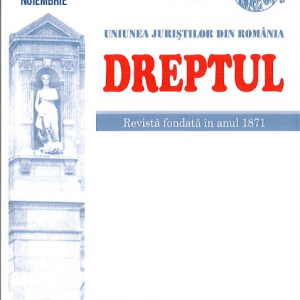 The Romanian Civil Procedure Code currently in force regulates, among others, the cross-appeal and the caused appeal, but these remedies are not regulated in the hypothesis of the (extraordinary) second appeal. The new Romanian Civil Procedure Code (published on 15 June 2010, but not yet in force) enacts both the caused cross-appeal and the caused cross-second appeal. After presenting the new regulation, the authors consider that, while the cross-/caused appeal is justified (since the appeal is a devolutionary remedy), the cross-/caused second appeal is not justified, since it is not compatible with the specific nature of the extraordinary second appeal.
The Romanian Civil Procedure Code currently in force regulates, among others, the cross-appeal and the caused appeal, but these remedies are not regulated in the hypothesis of the (extraordinary) second appeal. The new Romanian Civil Procedure Code (published on 15 June 2010, but not yet in force) enacts both the caused cross-appeal and the caused cross-second appeal. After presenting the new regulation, the authors consider that, while the cross-/caused appeal is justified (since the appeal is a devolutionary remedy), the cross-/caused second appeal is not justified, since it is not compatible with the specific nature of the extraordinary second appeal. -
 This study, having as theme general and special observations regarding the new Romanian Civil Procedure Code (Law no. 134/2010), after some brief preliminary observations, proceeds to a more thorough analysis of the fundamental themes of this Code, namely: the accentuation of procedural liberalism; the quality of the civil procedure law; the right of access to justice; the uniform interpretation and application of the law by the courts; celerity in the civil trial; accentuation of the effectiveness of remedies at law; higher-quality valorization of enforcement orders.
This study, having as theme general and special observations regarding the new Romanian Civil Procedure Code (Law no. 134/2010), after some brief preliminary observations, proceeds to a more thorough analysis of the fundamental themes of this Code, namely: the accentuation of procedural liberalism; the quality of the civil procedure law; the right of access to justice; the uniform interpretation and application of the law by the courts; celerity in the civil trial; accentuation of the effectiveness of remedies at law; higher-quality valorization of enforcement orders. -
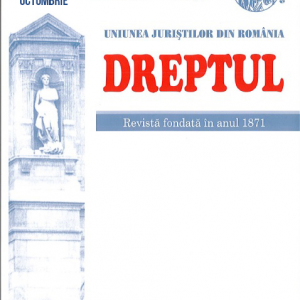 This study represents, in its essence, a micro-monograph regarding the right to image, a component of personality rights. In this respect, following a presentation regarding the “personality rights, in general”, the authors examine in detail the issue of the right to image (notion, basis, autonomy of the right to image, consent to the reproduction of one’s image, limits of the right to image, image contract, extinguishment of the right over image).
This study represents, in its essence, a micro-monograph regarding the right to image, a component of personality rights. In this respect, following a presentation regarding the “personality rights, in general”, the authors examine in detail the issue of the right to image (notion, basis, autonomy of the right to image, consent to the reproduction of one’s image, limits of the right to image, image contract, extinguishment of the right over image). -
 In this study, the author examines the constitutional and legal statute of the Romanian Court of Accounts, according to art. 140 of the Constitution of Romania (revised and republished on 31 October 2003), corroborated with a series of provisions contained in Law no. 94/1992 for the organization and operation of the Court of Accounts, as republished, for the second time, on 29 April 2009. To this effect, the authors examine the constitutional and legal statute of: the counselors of accounts; the personnel making up the executive management of the Court of Accounts and the Audit Authority, as well as the specialized personnel of the Court of Accounts (external public auditors).
In this study, the author examines the constitutional and legal statute of the Romanian Court of Accounts, according to art. 140 of the Constitution of Romania (revised and republished on 31 October 2003), corroborated with a series of provisions contained in Law no. 94/1992 for the organization and operation of the Court of Accounts, as republished, for the second time, on 29 April 2009. To this effect, the authors examine the constitutional and legal statute of: the counselors of accounts; the personnel making up the executive management of the Court of Accounts and the Audit Authority, as well as the specialized personnel of the Court of Accounts (external public auditors). -
 The continuous evolution of the social-economic life and the diversification of the forms of action of criminal groups have required, both as regards criminal offences and domestically, the regulation of the criminal liability of the legal entity. Since crime, in general and economic-financial crime, in particular, is continuously growing, the indictment of the legal entity as active subject of the criminal offence was considered useful. The Romanian lawmaker also did this, first, by amending the Criminal Code in operation by means of Law no. 278/ 2006 and then by drafting a new Criminal Code, according to the European democratic legislation. Given the importance of this institution for the Romanian criminal legislation, we considered useful to make a demanding radiography of this issue.
The continuous evolution of the social-economic life and the diversification of the forms of action of criminal groups have required, both as regards criminal offences and domestically, the regulation of the criminal liability of the legal entity. Since crime, in general and economic-financial crime, in particular, is continuously growing, the indictment of the legal entity as active subject of the criminal offence was considered useful. The Romanian lawmaker also did this, first, by amending the Criminal Code in operation by means of Law no. 278/ 2006 and then by drafting a new Criminal Code, according to the European democratic legislation. Given the importance of this institution for the Romanian criminal legislation, we considered useful to make a demanding radiography of this issue. -
 Taking into consideration the provisions of art. 1385, paragraph 4 of the new Romanian Civil Code (adopted and published in 2009, but not yet effective), according to which “if the illicit action caused the loss of the opportunity to gain an advantage, the remedy shall be proportional to the probability of gaining such advantage, by also taking into consideration the circumstances and the actual situation of the victim, and by considering the rich French case law in the field (in the matter of medical liability) the author believes that, in Romania, tort liability could exist even at present (in particular in case of malpractice, as regards medical liability) following the damage caused by losing the opportunity to gain an advantage. For this reason, the author presents in detail the compensation conditions for such damage.
Taking into consideration the provisions of art. 1385, paragraph 4 of the new Romanian Civil Code (adopted and published in 2009, but not yet effective), according to which “if the illicit action caused the loss of the opportunity to gain an advantage, the remedy shall be proportional to the probability of gaining such advantage, by also taking into consideration the circumstances and the actual situation of the victim, and by considering the rich French case law in the field (in the matter of medical liability) the author believes that, in Romania, tort liability could exist even at present (in particular in case of malpractice, as regards medical liability) following the damage caused by losing the opportunity to gain an advantage. For this reason, the author presents in detail the compensation conditions for such damage. -
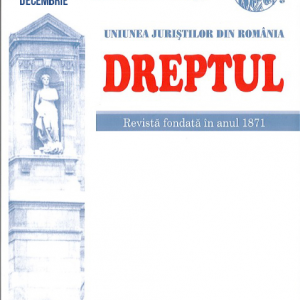 Promoting the conception according to which material evidence should be exclusively reserved for civil procedure as evidence is fulfilling its main role in trial, the author stresses that the new Civil Code achieves the unification of evidence regulation in civil matters, by including this regulation in art. 243-382 of the new Civil Code, a salutary solution, in accordance with the majority opinion of the doctrine. The Legislator, based on the new Civil Code, preserves part of the evidence regulations of the previous Code, but also embracing solutions adopted in the Civil codes of other states, such as, for example, the French, the Canadian province of Quebec or the Swiss Civil Code. Of course, the new Civil Code includes innovative solutions that the author deems useful and necessary, such as those relating to admitting as evidence documents stored on computer media or those regarding material means of evidence.
Promoting the conception according to which material evidence should be exclusively reserved for civil procedure as evidence is fulfilling its main role in trial, the author stresses that the new Civil Code achieves the unification of evidence regulation in civil matters, by including this regulation in art. 243-382 of the new Civil Code, a salutary solution, in accordance with the majority opinion of the doctrine. The Legislator, based on the new Civil Code, preserves part of the evidence regulations of the previous Code, but also embracing solutions adopted in the Civil codes of other states, such as, for example, the French, the Canadian province of Quebec or the Swiss Civil Code. Of course, the new Civil Code includes innovative solutions that the author deems useful and necessary, such as those relating to admitting as evidence documents stored on computer media or those regarding material means of evidence.
